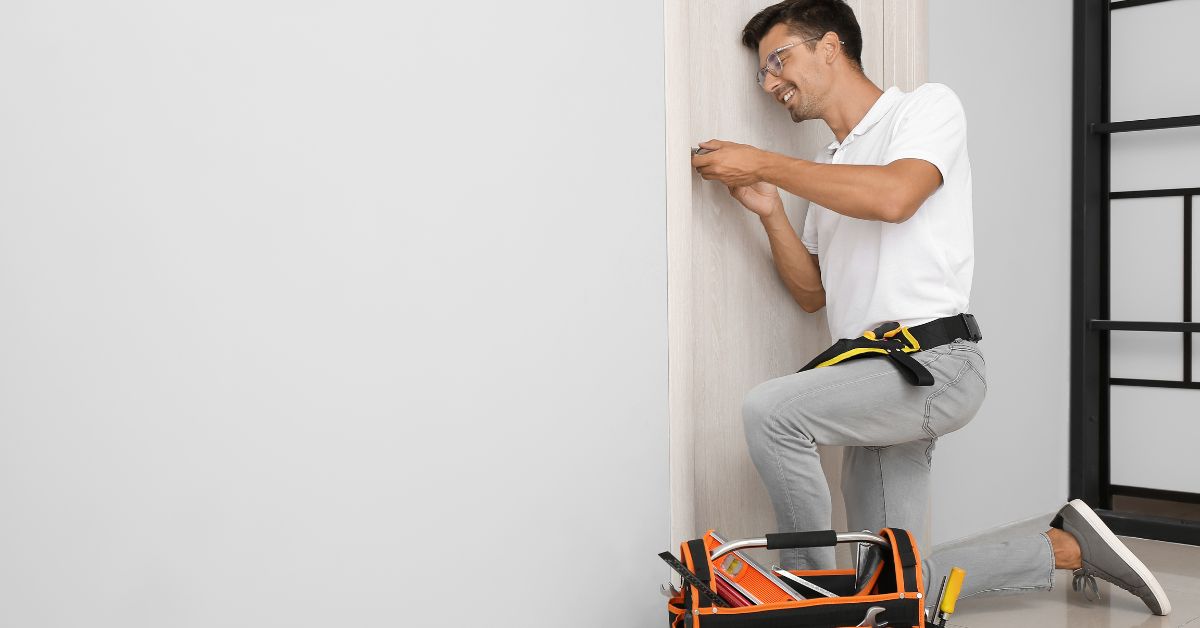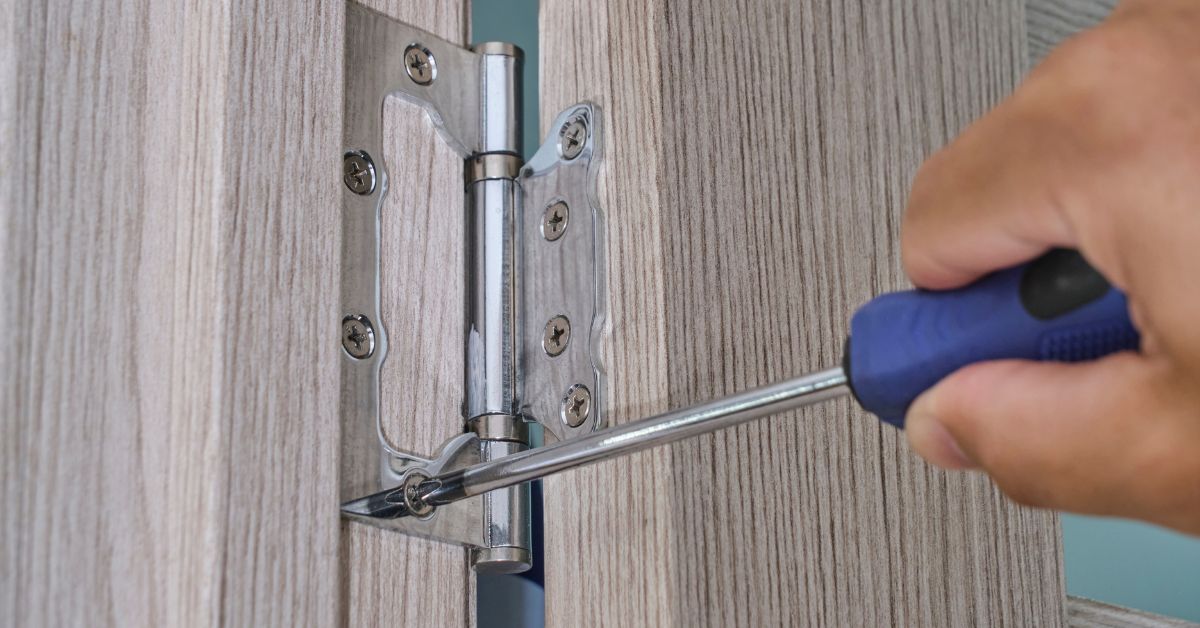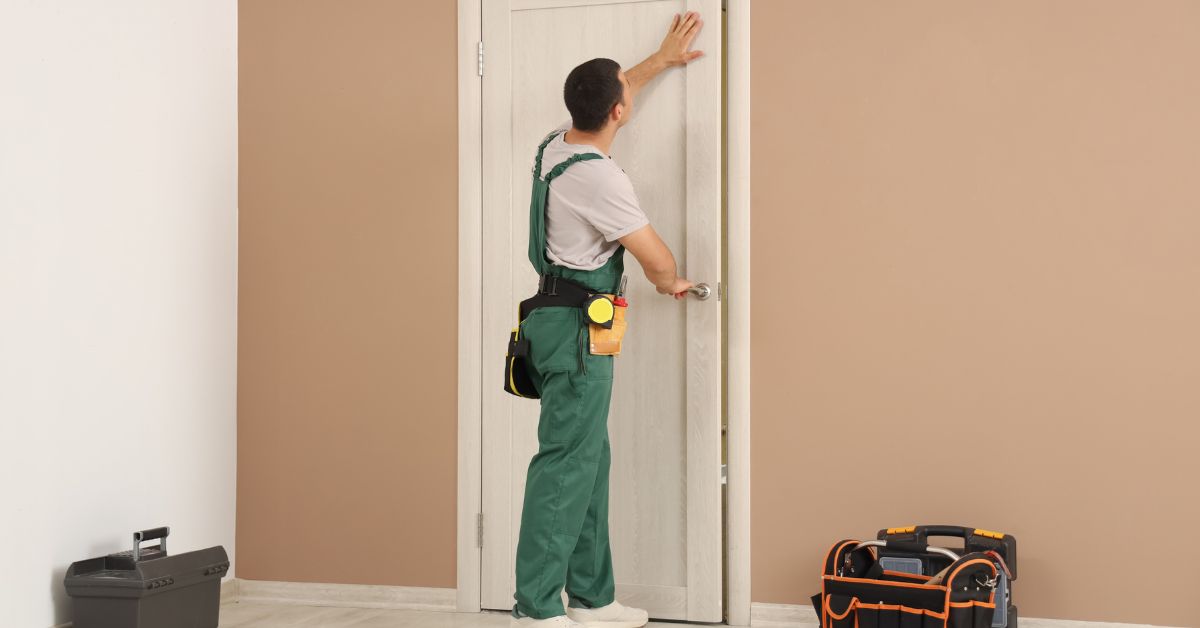A Complete Guide To Maintaining Your Door's Hinges

Perform Regular Visual Inspections
Consistent visual checks keep you ahead of potential problems. Inspect the door hinges monthly for high-traffic areas and quarterly for less busy doors. Look for loose screws, rust spots, or doors that drag. These are signs that something could be wrong with the door hinges.
When the hinges get misaligned, doors drag or don’t latch properly. These minor problems can turn into expensive repairs down the road. If you notice stripped screws or recurring issues, it may be time for new hinge hardware. Keep track of any problems with your doors. A written record of any problems makes troubleshooting faster and prevents repetitive failures.
Keep Hinges Clean and Free of Debris
Use a microfiber cloth to remove surface grime without scratching the hinges. For more challenging spots, apply a non-abrasive cleaner and focus on one hinge at a time. Always dry hinges thoroughly to avoid rust from leftover moisture. Additionally, avoid harsh chemicals that might corrode the metal, like:
- Bleach
- Ammonia
- Acid-based cleaners
- Abrasive powders or sprays
Lubricate Hinges for Smooth Functionality
In busy commercial spaces, doors constantly swing open and closed, creating friction that can damage hinges or lead to bothersome squeaks. Without lubrication, hinges experience increased stress, which shortens their lifespan.
Choosing the Right Lubricant
When selecting a product, focus on performance and compatibility with metal hardware. A good lubricant should withstand daily use without breaking down or leaving harmful residue.
Invest in high-quality silicone-based lubricants or hinge-specific oils for doors that see heavy daily use. Stay away from petroleum-based greases. They attract grime and harden over time, making your problem worse than before. Using improper or low-quality lubricants compromises the hinge hardware and reduces its efficiency over time.
How to Apply Lubricant Correctly
Before applying lubricant, make sure the hinges are clean and dry. Use a microfiber cloth to remove surface grime and a small brush for hard-to-reach spots. Once the door hinges are clean, spray or drip a small amount of lubricant directly on the hinge joints.
Open and close the door several times to work the lubricant into every part of the hinge. If you notice any areas that still squeak or feel stiff, apply a second coat of lubricant. Always remove excess lubricant with a cloth to prevent it from leaking onto the floor.
The frequency of lubrication depends on the level of door traffic. In busy areas where doors are constantly being used, they may need lubrication every three months. You can go up to six months or longer between lubrications for doors that are not consistently used.
Tighten Loose Screws and Fasteners

Loose screws mean loose hinges, which throw off door alignment and cause dragging when being opened and closed. This issue can also compromise security for commercial doors if the door doesn’t fit properly within its frame.
When screws aren’t tight, every component of the door starts taking on stress it wasn’t designed for. Minor issues, such as a slight wobble, can quickly escalate into costly problems. Regular inspections help you catch loose screws before they cause bigger concerns.
How To Fix Loose or Stripped Screws
Use a screwdriver or hex key to check the tightness of every screw on the hinge plates. Don’t overlook smaller screws that may appear secure. They might need to be tightened, too.
Always use the right-sized screwdriver when tightening screws to avoid damaging the screw heads. Apply steady pressure while turning the screwdriver to create a snug fit without overdoing it, as overtightening could cause cracks in the frame or hinge plate. If screws become loose repeatedly, consider adding a thread-locking adhesive to secure them in place.
If you find a screw that spins endlessly without tightening, this is a sign it has stripped the material in the frame. It’s important to immediately replace stripped or damaged screws before they cause more serious issues with your door or hinge hardware. For damaged or stripped screws, remove them completely and replace them with longer ones. Alternatively, use wooden dowels or plugs to fill gaps in wooden frames, providing a better grip for new hardware.
Address Rust and Corrosion Promptly
Rust forms when moisture contacts metal, making it a common issue for commercial door hinges in humid or wet environments. Kitchens, restrooms, and exterior entry points are particularly prone to rust.
Low-quality hinge materials, such as untreated steel, are more vulnerable to corrosion. Rust weakens the hinge and causes stiffness, noise, and misalignment over time. However, you can maintain your commercial door’s hinges by quickly removing minor rust.
Grab a wire brush or fine-grit sandpaper to scrub away the rust. Apply gentle but firm pressure while removing the rust to prevent scratching the hinge. Once the rust is gone, wipe the area clean with a damp cloth. Afterward, apply a rust converter to neutralize any remaining corrosion. Finish by coating the hinge with a rust-resistant primer or spray.
Proper maintenance is your best defense against corrosion. Regularly clean hinges to remove moisture, grease, or debris that could accelerate rust formation. Apply protective coatings or lubricants that repel water, especially in high-humidity areas. You can also prevent rust by investing in premium-grade hinge hardware.
Regularly Test for Proper Alignment
Misaligned hinges cause the door to drag, rub against the frame, or fail to latch securely. Over time, these issues also place unnecessary stress on the hinges and the door frame, leading to cracks or warping.
Visual observations and movement tests can reveal alignment issues before they worsen. Be sure to check doors in areas with heavy traffic, as frequent slamming can easily knock doors out of alignment. Look for uneven gaps along the edges of the door when it’s closed. For example, if the bottom gap is noticeably larger than the top, the hinges may need an adjustment. Additionally, open and close the door a few times, paying attention to whether it sticks, grinds, or swings unevenly.

Spotting and Fixing Issues
If there is a minor misalignment, you can fix it yourself. Loosen the screws slightly to reposition the hinge and restore a uniform gap around the door. Tighten the screws firmly while holding the door in place to ensure it is properly aligned once the screws are tightened. For heavier commercial doors, you may need to insert additional shims behind the hinges to achieve proper spacing. Always test the door after making adjustments to confirm a smooth, even swing.
Performing routine checks and preventive maintenance are the best ways to avoid misalignment problems. Monitor your doors after extreme weather, consistent use, or heavy cleaning since these can affect how hinges sit. Routinely tighten hinge screws and inspect for loose or worn hardware. These simple checks can save you hours of frustration fixing misaligned doors.

Author
Greg Richard
Chief Technical Officer and Founding Member of DoorHub.com